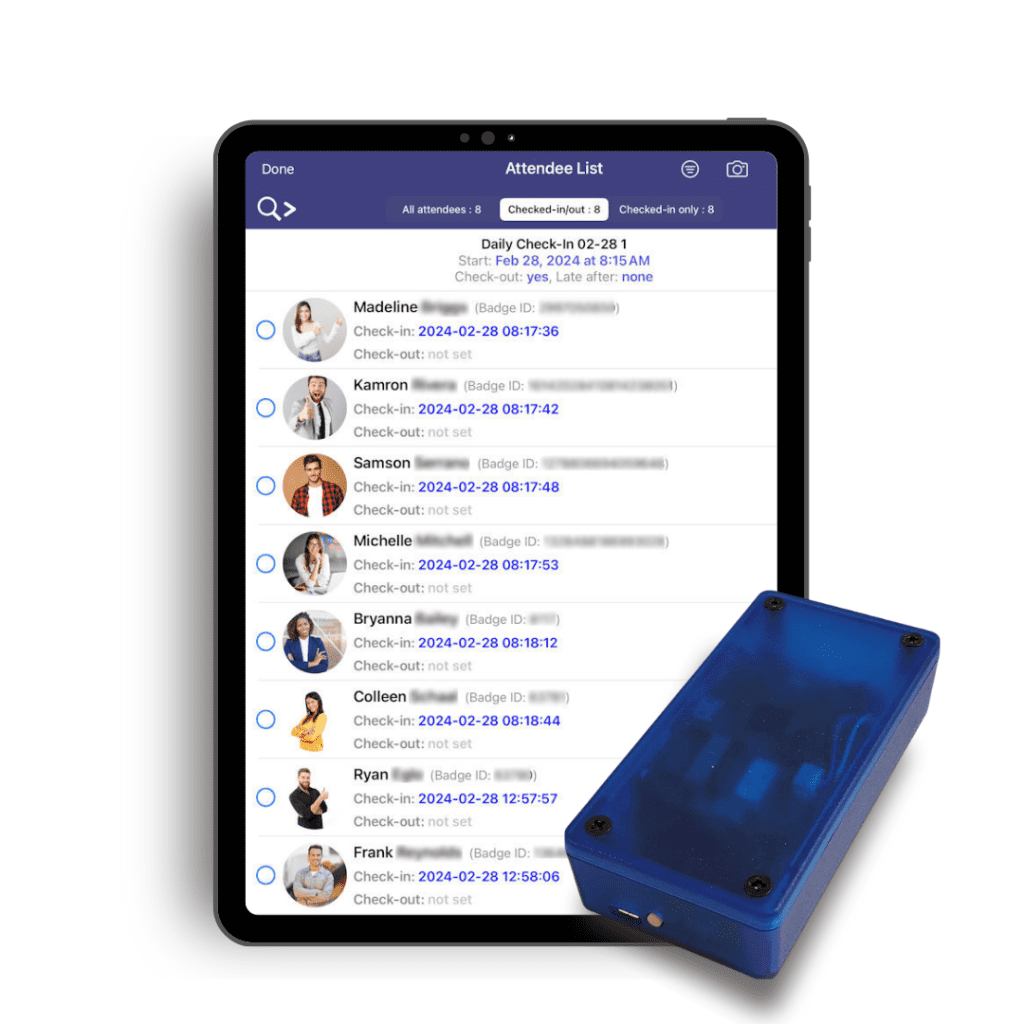
6 Ways to Improve Emergency Preparedness in Schools

According to the National Center for Education Statistics, more than 90 percent of public schools had a written emergency preparedness plan. These schools also performed drills throughout the year to prepare for scenarios that ranged from natural disasters to active shooters.
Unfortunately, emergencies are inevitable, and no matter how much we try to prevent them, they’re bound to happen at some point. In many cases, the real issue isn’t the emergency itself, but how unprepared schools and organizations are when they occur. That’s why having a clear, written emergency plan is so important.
Having a clear emergency plan is essential, but schools must also recognize that emergencies come in many forms. That is why it is important to integrate innovative tools like Stratus-io: Emergency Headcount to help keep faculty, staff, and students safe during any crisis. In this blog, you will discover six effective ways to enhance emergency preparedness in schools.
Stratus-io: Emergency Headcount
Why Emergency Preparedness in Schools Matters
Emergency preparedness goes beyond just writing a plan. It’s easy to jot down a few steps and get a false sense of productivity. While having a written plan is important, it’s equally important to understand why emergency preparedness is crucial in a school setting.
When you take the time to understand the importance, you begin to realize how serious the consequences can be if something goes wrong. You’re not just preparing for yourself. You’re preparing for the students who said good morning to you, the teacher across the hall who always keeps extra pencils for anyone who forgets theirs, or the custodian who knows every corner of the building.
Types of Emergencies to Stay Prepared For
Being aware of the types of emergencies that can happen is the first step in making sure your school is prepared. You can’t plan for everything, but you can be ready to respond. Below are some common emergencies that every school’s emergency plan should cover:
- Active Shooters
- Natural Disasters
- Suicide Threat or Incident
- Pandemic Disease
- Bomb Threats or Incidents
What Statistics say about Emergencies in Schools
The School Survey on Crime and Safety (SSOCS) gathers data from public schools about safety measures, written emergency procedures, and the types of drills conducted with students. In 2022, they found that many public schools had written plans and procedures for different types of emergencies. Below is a breakdown of the percentage of schools with plans for each type of emergency:
Is School Safety a Concern?
Motorala solutions revealed that 67% of both parents and teachers are much more concerned about school safety now than they were five years ago. That said, 80% of teachers and 73% of parents are confident that their schools’ emergency response plans are effective.
6 Ways to Improve Emergency Preparedness in Schools
Understand the Different Types of School Emergencies
It’s better to be over-prepared than caught off guard. Recognize the full range of emergencies that could affect your school. Maybe tornadoes are common in your area, so that’s where you focus most of your efforts, but that doesn’t mean you should neglect planning for incidents like active shooters or medical emergencies. Emergencies don’t follow rules. Being prepared for the unexpected can be the difference between chaos and control.
Review and Update Your Emergency Plan Regularly
If your emergency plan hasn’t been touched since last year’s National Preparedness Month, it’s time for a mindset shift. Emergencies evolve, and so should your response. New technology, staffing changes, building renovations, all these are all factors that could impact your preparedness. Make it a habit to review your plan regularly and adjust it to reflect your current reality.
Leverage Technology for Real-Time Accountability

Schools are increasingly turning to tools like Stratus-io: Emergency Headcount to track real-time attendance, communicate faster with staff, and account for every student during a crisis. According to SSOCS, common safety measures already include things like visitor check-in systems and surveillance cameras. Incorporating technology that provides instant accountability adds another critical layer of protection.
Conduct Routine Drills and Training for Staff and Students
A plan is only as good as the people who know how to use it. That’s why regular drills are essential. Whether it’s a fire drill, lockdown, or evacuation practice, repetition builds muscle memory. When a real emergency happens, there’s no time for confusion or hesitation. Routine training empowers your team to act quickly, because in a crisis, every second counts.
Partner with Local Authorities and First Responders
Strong relationships with local police, fire departments, and medical responders can make a world of difference in an emergency. These partnerships help ensure that everyone is aligned when a real incident occurs. Invite them to walk through your school, join emergency drills, or provide feedback on your current plans. You can also use systems that support coordinated communication like SMS alerts to streamline response efforts.
Promote a Culture of Safety and Awareness
Build a culture where safety is everyone’s responsibility. When people feel informed, they’re more likely to respond effectively in a crisis. Safety should feel like a shared value, not a once-a-year topic.
Leveraging Technology to Improve Emergency Response

One of the most impactful ways to enhance your plan is by integrating the right technology. You might be wondering, “How can technology really improve safety during an emergency?” That’s where tools like Stratus-io: Emergency Headcount come or the idChamp® NF4X come in.
Stratus-io: Emergency Headcount
We’ve created a short video to show exactly how Stratus-io supports real-time headcounts, improves accountability, and helps schools respond faster and more effectively. Check it out below to see how your school can be better prepared!

Cloud-In-Hand® Solution Team
This blog reflects the expertise of the Cloud-In-Hand® Solution Team with over 100 years of experience in hardware, software, and firmware development. Since founding Solutions Consulting in 1992, now known as Serialio LTD, the Solution Team has designed and developed many innovative solutions. Cloud-In-Hand® Stratus-io Time and Attendance, helps organizations like Apple, Google, Toshiba, LinkedIn, Salesforce, and many more, streamlining their operations.


